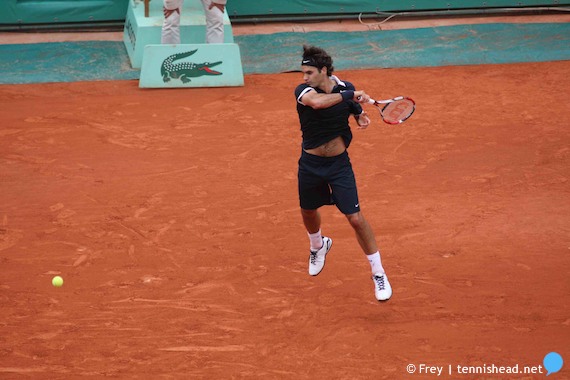^ Yes, tennis is a bit of a challenge. This is also pretty much the same sequence a baseball batter or cricket batsman goes thru to hit a ball. With tennis pros, you do see some variations for #3. I believe that Agassi stopped moving his head & eyes at a approx the point where the ball vanishes rather than at the expected contact point. Many players will look at a point just in front of the racquet's expected impact point whereas Federer "appears" to be looking thru his strings to "see" the incoming ball.
It does make sense though.
One thing I learned from motorcycle racing is that the bike goes where you look (obviously because it is you who drive it there), I think this would be the same for the tennis. Once you develop the skills of fixating your eyes on the contact point, the racquet will "drive" itself to the contact point automatically, merely because this is one of the inherent attributes we have as humans.


